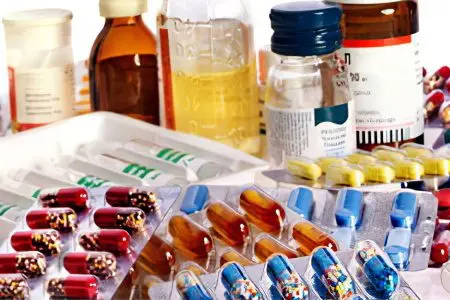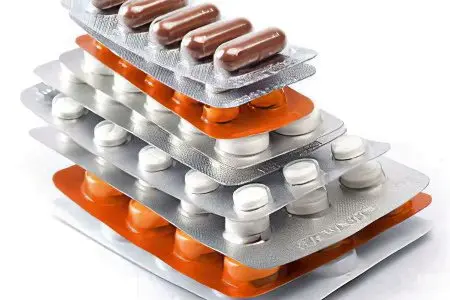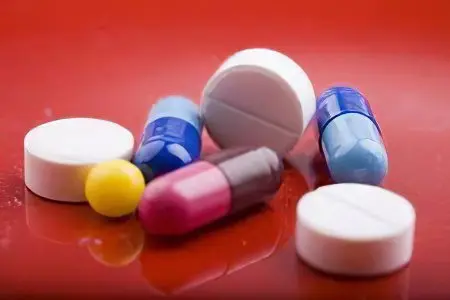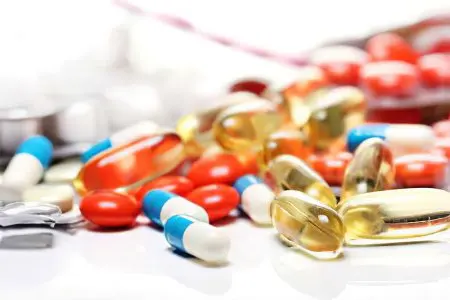Contents

The selection of drugs for the treatment of diabetes mellitus is the most important task that the doctor faces. After all, a well-designed therapeutic scheme will optimize blood sugar levels and prevent the development of dangerous complications of the disease.
Taking medications makes it possible to stimulate the production of insulin, and also prevents the instantaneous absorption of glucose into the blood.
Treatment Scheme

Taking drugs for type 2 diabetes is aimed at achieving the following goals:
Reduce tissue insulin resistance.
Stimulate the process of insulin synthesis.
Resist the rapid absorption of glucose into the blood.
To normalize the balance of lipids in the body.
Therapy should start with one drug. Further introduction of other drugs is possible. If the desired effect cannot be achieved, the doctor recommends insulin therapy to the patient.
The main groups of drugs

Taking medications for type 2 diabetes is a prerequisite for maintaining health. However, we must not forget about maintaining a healthy lifestyle and proper nutrition. At the same time, not all people are able to gather strength and force themselves to live in a new way. Therefore, medical correction is required very often.
Depending on the therapeutic effect, patients with diabetes mellitus may be prescribed drugs from the following groups:
Drugs that eliminate insulin resistance are thiazolidinediones and biguanides.
Drugs that stimulate the production of insulin in the body are glinides and drugs based on sulfonylurea.
Preparations having a combined composition are incretinomimetics.
Drugs that are prescribed for patients with diabetes mellitus:
Sulfonylurea.
Alpha-glucosidase inhibitors.
Thiazolidinedione.
Incretinomimetics.
prandial regulators.
Biguanide.
Insulin.
Biguanide

Biguanides are drugs based on metformin (Glucofage, Siofor).
Therapeutic effects are achieved by solving the following tasks:
In the process of processing glycogen, as well as proteins and carbohydrates, glucose synthesis decreases.
Tissues become more receptive to insulin.
Increased storage of glucose in the form of glycogen in the liver.
Sugar enters the blood in small quantities.
Glucose enters the cells and tissues of internal organs in greater quantities.
At the beginning of treatment with biguanides, patients develop side effects from the digestive system. However, after 14 days, they will be stopped, so you need to take this for granted. If this does not happen, then it is necessary to contact a specialist who will modify the therapeutic regimen.
These side effects include:
Nausea and vomiting.
diarrhea.
Bloating.
A taste of metal in the mouth.
Sulfonylurea

Drugs – derivatives of sulfonylurea have the ability to bind to the beta receptors of cells and activate the production of insulin. These drugs include: Gliquidone, Glurenorm, Glibenclamide.
For the first time drugs are prescribed in the minimum dosage. Then, over the course of 7 days, it is gradually increased, bringing it to the desired value.
Side effects from taking sulfonylurea derivatives:
A sharp drop in blood glucose levels.
The appearance of a rash on the body.
Damage to the digestive system.
Itching itch.
Lesion of the liver.
Glinides
Glinides include Nateglinide and Repaglinide. Their effect is to increase the production of insulin in the pancreas. As a result, it is possible to control the level of glucose in the blood after eating.
Thiazolidinedione
The drugs in this group include pioglitazone and rosiglitazone. They activate receptors in muscles and fat cells, thereby increasing their sensitivity to insulin. As a result, glucose is normally absorbed by fat cells, liver and muscles.
Thiazolidinediones are effective drugs for the treatment of type 2 diabetes mellitus, but they should not be taken during pregnancy and while breastfeeding, in patients with chronic heart failure and with liver pathologies.
Incretinomimetics
Incretinomimetics include a drug called exenatide. Its action is aimed at increasing the production of insulin, which becomes possible due to the ingress of glucose into the blood. At the same time, the production of glucagon and fatty acids in the body decreases, the process of digestion of food slows down, so the patient remains full longer. Incretinomimetics are drugs of combined action.
The main side effect of taking them is nausea. As a rule, after 7-14 days from the start of therapy, nausea disappears.
β-glucose inhibitors
Acarbose is a drug from the group of β-glucosidase inhibitors. Acarbose is not prescribed as a lead drug for the treatment of diabetes, but this does not diminish its effectiveness. The drug does not penetrate into the bloodstream and does not affect the process of insulin production.
The drug enters into competition with carbohydrates from food. Its active substance binds to enzymes that the body produces to break down carbohydrates. This helps to reduce the rate of their assimilation, which prevents significant jumps in blood sugar levels.
Video: Malysheva’s program “Medicines for old age. ACE inhibitors”
Herbal preparations

Sometimes with diabetes, the patient is recommended to take drugs based on herbal ingredients. They are designed to normalize blood sugar levels. Some patients take such nutritional supplements for full-fledged medicines, but in reality this is not the case. They won’t allow you to recover.
However, they should not be abandoned. These drugs help to improve the patient’s well-being, but the treatment should be comprehensive. They can be taken at the stage of prediabetes.
Insulate is the most commonly prescribed herbal preparation. Its action is aimed at reducing the degree of absorption of glucose in the intestine. Thus, its level in the blood decreases.
Taking Insulate allows you to activate the work of the pancreas and stabilize the weight of the patient. It can be taken both to prevent the development of type XNUMX diabetes, and in combination with other drugs. If you do not interrupt the therapeutic course, you will be able to achieve stable normalization of blood sugar levels. At the same time, it is necessary to adhere to a diet and not deviate from medical recommendations.
Features of insulin treatment
If diabetes exists in a patient for many years (from 5 to 10), then the patient needs to take specific drugs. Such patients are temporarily or permanently prescribed insulin injections.
Sometimes insulin is prescribed even earlier than 5 years after the onset of diabetes manifestations. The doctor decides on this measure in the case when other drugs do not achieve the desired effect.
In years past, people who took drugs and dieted had a high glycemic index. By the time they were prescribed insulin, these patients were already experiencing severe diabetic complications.
Video: Insulin therapy for diabetes mellitus:









